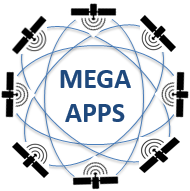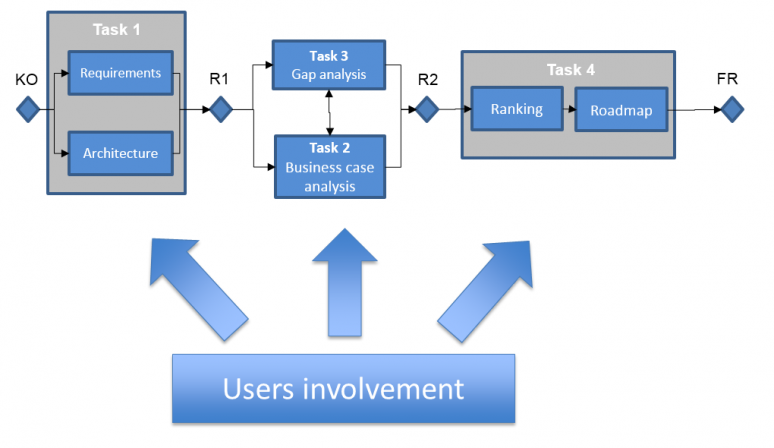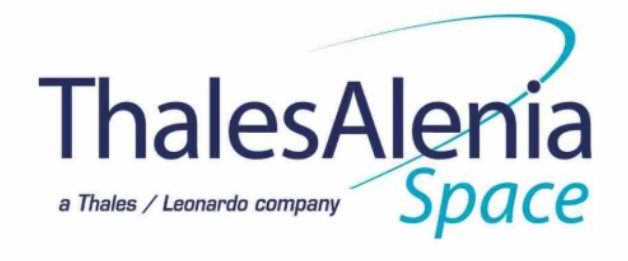
-
StatusCompleted
-
Status date2018-06-28
-
Activity Code1A.100
This activity aims at identifying and analysing services and applications based on mega-constellations. More in detail, the objectives are:
- To identify promising services/applications opportunities, by characterising the added value brought by mega-constellation systems wrt. state-of-the-art solutions and assessing the business opportunity.
- To define the details of these services/applications by collecting related user needs and requirements and deriving accordingly the system requirements and overall system architecture.
- To identify the required actions and actors to be involved for their implementation and commercial roll-out, covering software or hardware developments, regulatory/standardisation actions, business activities, risks assessment, and eventually the definition of a roadmap.
The key challenges of the study are:
- The correct interpretation of the users needs, for the best identification of new services/application or improvement of the existing ones.
- The definition of assumptions about mega-constellation and user terminal features, performances and costs, in advance to the actual mega-constellations deployment.
- The analysis and design of a set of applications from different market sectors, characterised by very different needs and requirements.
- The identification of the regulatory framework and standardisation needs for some kind of applications, requiring an in depth analysis of the current regulations and standards.
- The investigation on the currently available technology and the identification of the necessary improvements for its inclusion in the application.
Mega-constellations are expected to introduce a major change in the telecommunication services, which are now dominated by geostationary solutions, in particular introducing new service opportunities.
The services identified in this study are all based on the unique features and benefits of mega-constellations, going beyond the current state-of-the-art of geostationary satellite services. This study also contributes to improve the industry competitiveness and awareness of the opportunities promised by the mega-constellations.
Several kinds of applications, exploiting the mega-constellation features and performances, have been initially investigated in this study. They are listed below, together with the relevant market sector:
- Energy sector: remote office and situational awareness applications
- Transport sector: RPAS commanding/control, autonomous vessels and payload data relay applications
Several mega-constellations have been considered into this study: Iridium Next, OneWeb, LeoSat, O3B. Relevant terminals types and technologies have also been addressed.
Then, following the users interviews and opportunities investigation, a set of services have been identified and the relevant architecture has been defined:
- Remote office for oil&gas infrastructure management
- Energy infrastructure monitoring and control system
- RPAS connectivity for worldwide cargo transport
- Autonomous vessel operations in remote/Arctic areas
- Enhanced situational awareness in the Arctic
The activity is structured in four logical tasks and three reviews: First Review (R1), Second Review (R2) and Final Review (FR).
Task 1 addresses the service requirements and architecture. In Task 2 the business case is analysed, then in Task 3 the possible technical gaps are identified. Finally, in Task 4 a ranking of the services is performed and, for the two most promising ones, an implementation roadmap established.

During the execution of the study activities, the users have provided requirements and feedback on the identified services.
After the definition of the assumptions about mega-constellation and user terminal performances, the end users have been interviewed, defining the architecture of 5 service opportunities in the Energy and Transport market sector. Then, the relevant business cases and technical gaps have been analysed. Finally, based on these analyses, the two most promising opportunities have been identified and an implementation roadmap has been defined, resulting in the successful closure of the study activities.
The most significant achievements of the study have been:
- the characterisation of the mega-constellation performances, also defining possible price ranges for services and terminals;
- the identification of the business opportunities, technical solutions, relevant risks and costs ranges for possible applications exploiting mega-constellations data links;
- the definition of a step-by-step approach for the two most promising applications implementation, considering the time constraints deriving from mega-constellations availability.




